Give Me More. More Moringa
The powerful health benefits behind one of the newest superfoods, Morgina
Spice is Life
The powerful health benefits behind one of the newest superfoods, Moringa
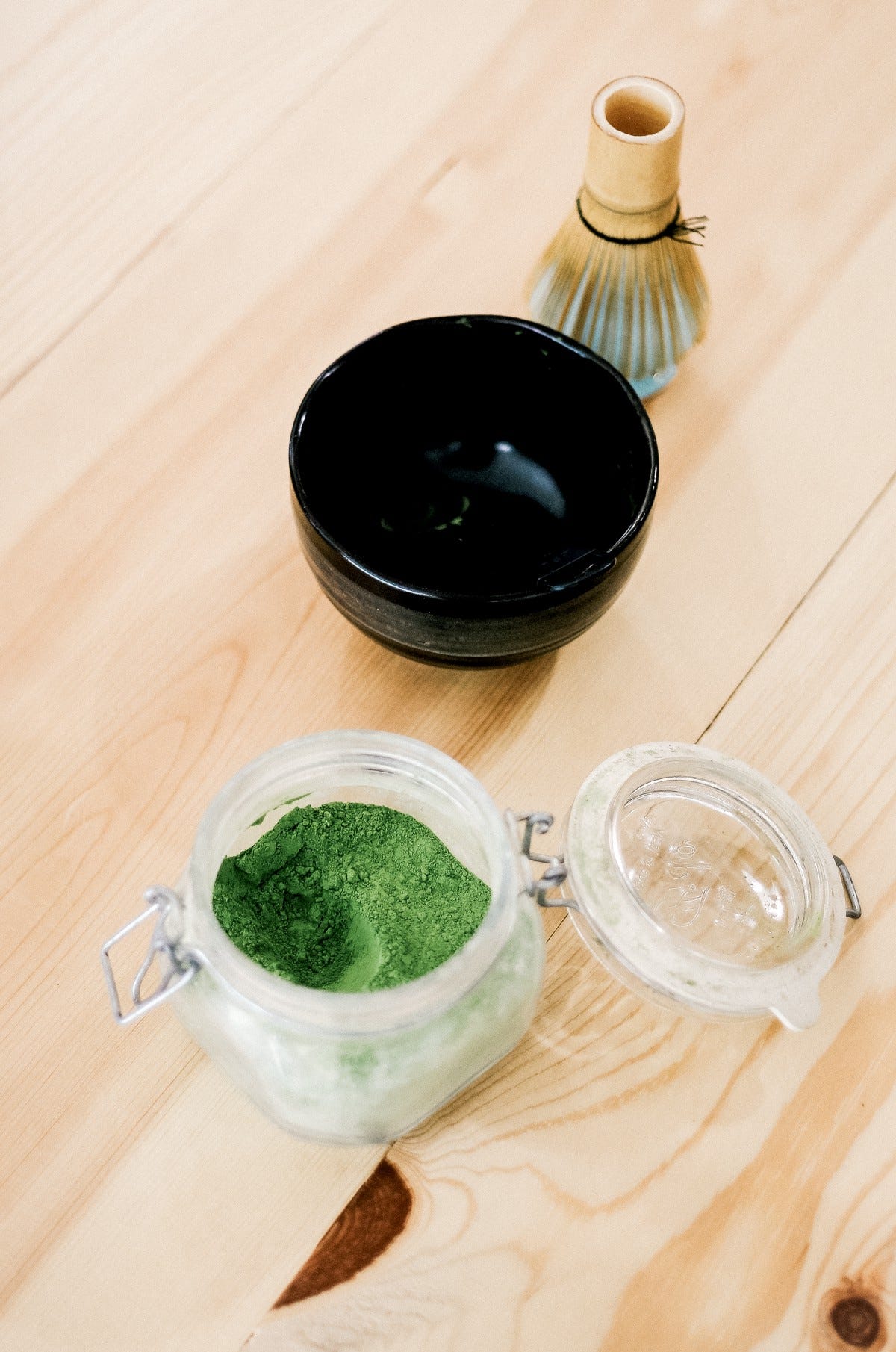
Bring on the Moringa!
Morning, day or night, a sprinkle here and a teaspoon there, moringa powder can be used in many delicious recipes to improve your food, mood, and benefit your health overall.
Let’s dive into the ancient science surrounding this resurrected superfood.
Many plants, herbs, and spices have been used for thousands of years in medicine practices such as Traditional Chinese Medicine and Ayruveda. Moringa in particular is high in chlorophyll, a plant compound that gives it that strong green color. Similar signs of chlorophyll and health promoting properties have been spoken about green tea, matcha, wheat grass, and spirulina.
You can expect to see Moringa oleifera offered as a remedy to help with digestion, headaches, and inflammation. It also possesses many other bioactive compounds known to be antibacterial, antifungal, antimicrobial, and even antiviral.
If you know much about plant medicine, you won’t be surprised by these claims alongside its high levels of antioxidants, especially Vitamin A, which is most well-known for its impact to promote good eye health. Moringa provides a host of other nutrients, most notably are the important minerals magnesium (Mg), iron (Fe), calcium (Ca), and copper (Cu).
Likewise, plentiful polyphenols and flavonoids, compounds commonly associated with coffee, tea, wine, dark chocolate, found in Moringa can play a powerful role in an overall healthy diet and prevention of cardiovascular and diabetes risk. A diet rich in a colorful variety of plant foods, fruits, and vegetables, herbs and spices seems to offer countless benefits to human health and longevity. If you know what you’re doing in the kitchen, life truly can be nutritious and delicious.
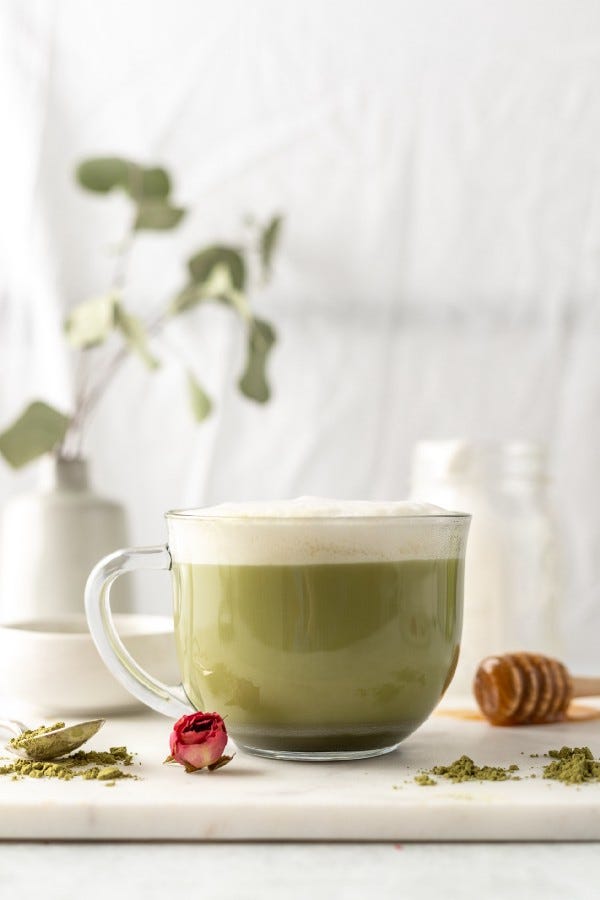
Photo by Sarah Gualtieri on Unsplash
Antioxidants help your body in countless ways, empowering your immune system, scavenging free radicals — which are particles that can damage pretty much every system in your body — and much much more.
DNA damage can happen throughout the body and foods high in antioxidants are typically great additions to any diet, to help reduce potential oxidative damage at the cellular level.
Other health promoting compounds found are tocopherols, catechins, and quercetin just to name a few. These are commonly touted by lovers of green tea and matcha, but can also found in Moringa as well.
Another interesting insight for using most spices or plant powders is that they can often act as resistant starches, providing fiber and lowering blood glucose (spikes) effects during meal times.
Furthermore, Moringa can help promote vasodilation, reducing inflammation and high blood pressure.
Worried about high cholesterol as well?
Well, moringa can help with that too. Studies have shown that regular consumption of moringa may help lower LDL cholesterol and raise HDL cholesterol.
As science advances, so too will the healthful applications to using this plant-powered powder for breakfast, lunch, dinner (and yes, even dessert)!
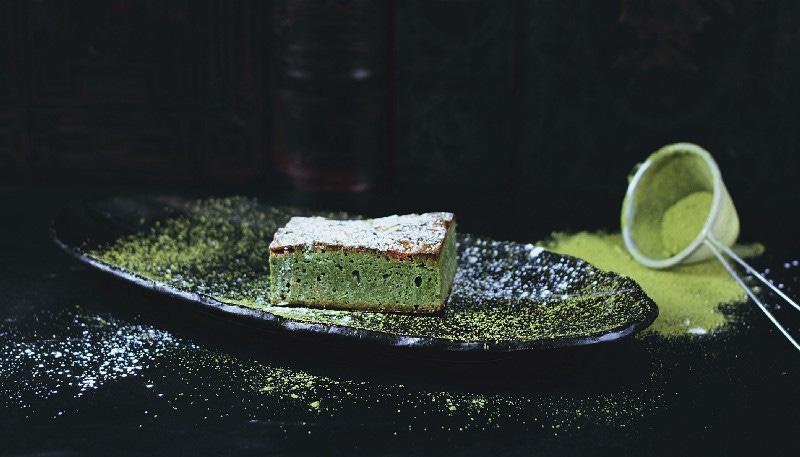
Photo by Toa Heftiba on Unsplash
Does organic make a difference?
While most spices are pretty clean in their processing these days, it is always best to check for quality sourcing and transparency in the value chain. If you can afford the option to purchase organic, you potentially see a greater flavor, aroma, and bioavailability of this medicinal plant.
How much can I have in a day?
“Know thyself.” Start with a sprinkle here and a dash there. Slowly work your way up to half a teaspoon and possibly a whole teaspoon if you like. In my personal opinion, every person is different when it comes to taste and palate preferences as well as their own unique digestion. Navigate and moderate your use of Moringa to see how it impacts your digestion, your digestion and your immune system.
This may sound like common sense, but don’t forget that too much of a good thing can become something bad. Don’t go overboard too soon. If you notice yourself feeling nauseous or having an upset stomach, try to consume less or take a couple days of rest from Moringa before adding back in your routine. You can also find a balance in your life by consuming moringa every other day rather than every single day if you still want to feel good about adding it in your week without worrying about having too much.
Try some of the interesting recipes below if you’re ready to take the first steps to putting more Moringa in your life.
Moringa Tea
Heat one cup of water to boil like you would for any of your favorite teas. Use a reusable tea sachet to steep dried moringa leaves or add in half a teaspoon moringa powder and stir well. You can also blend your hot water with the moringa powder for better consistency.
Moringa Latte
Heat 1 cup of your favorite clean, plant-based milk near boil. Add one half teaspoon moringa powder. Use a milk frother or blender to whip and blend together. Enjoy the beautifully green hue created by mixing moringa with the milk. Add maple syrup or honey if you would like to sweeten to taste. Additionally, you can consider a dash of cinnamon for a photo worthy of the gram.
Moringa Latte (Iced)
Personally, I like the iced version best.
Using 1 cup of your favorite clean, plant-based milk, add one half teaspoon moringa powder and use a milk frother or blender to whip together the moringa powder into the milk. When it is well combined, pour over ice.
Add honey or maple syrup if you would like to sweeten to taste.
[You can also prepare the warm latte version and store in the refrigerator to have freshly chilled moringa-milk ready to go. Pour over ice.]
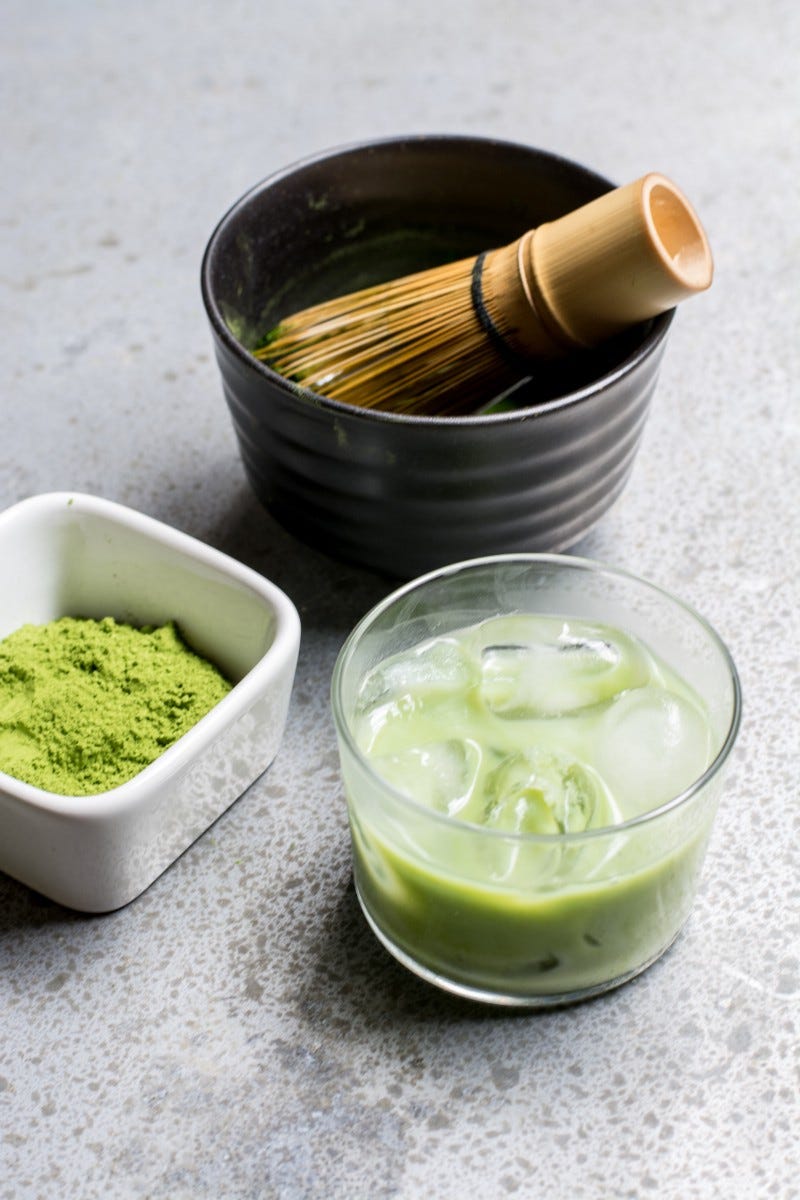
Photo by Alice Pasqual on Unsplash
Moringa Breakfast Smoothie
Easily mix one half teaspoon Moringa powder to your favorite breakfast smoothie recipes.
Feel free to try this one here, I call it lean and green for a reason :)
½ banana (frozen works too)
½ cup blueberries (fresh or frozen)
½ frozen peas
½ fresh avocado
½ cup frozen spinach
½ kiwi fruit
3 cherries, pits removed
¼ cup lemon juice
½ tsp ginger
½ tsp Moringa powder
1 dash Cinnamon
1–2 cup clean, plant based milk
(if you’re using fresh fruit and vegetables, you won’t need as much liquid to help blend the recipe together, however if you’re using frozen fruit and vegetables, you will need to add some additional milk or water)

Moringa Smoothie Bowl
Use the same recipe for the morning smoothie, but portion into two small bowls. Add your favorite toppings of fresh fruit like blueberries, blackberries, raspberries, sliced banana, avocado, kiwi, nuts and seeds like sunflower or sesame seeds, ground flax or chia seeds almonds, cashew butter, or tahini.
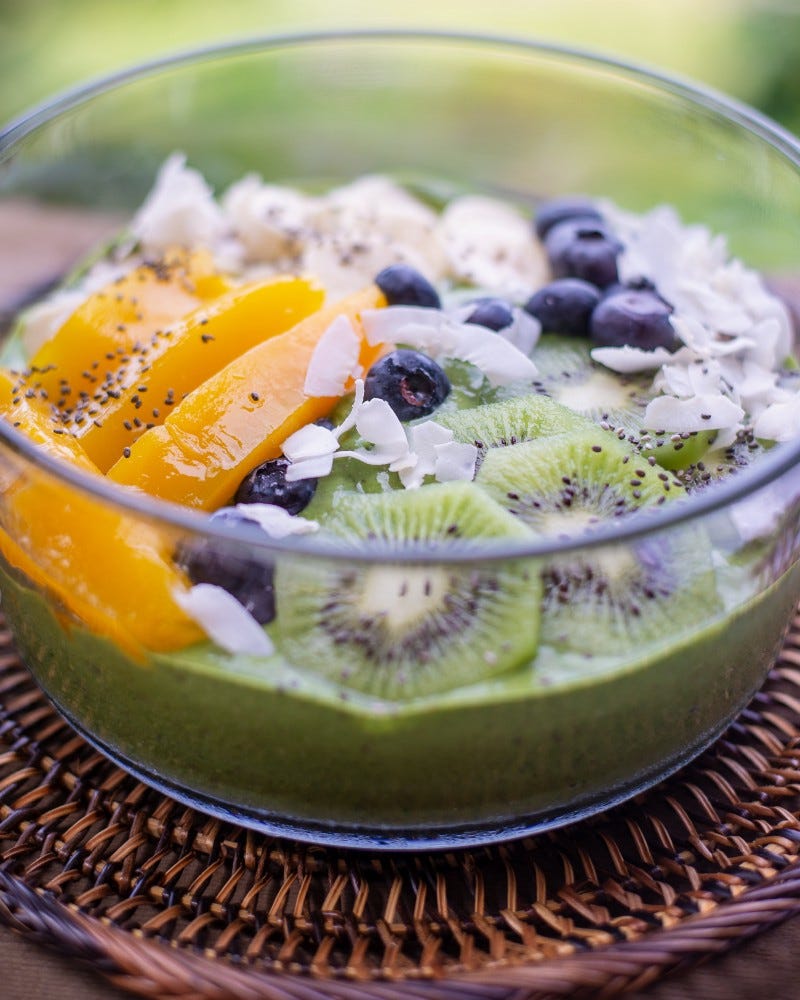
Photo by Tina Witherspoon on Unsplash
Summary:
Moringa has been used for centuries in many cultures and can be helpful for the treatment and prevention of many conditions
Moringa possesses several vitamins and minerals, antioxidants, polyphenols, flavonoids, and other phytochemicals
Moringa can help lower inflammation and may even help reduce pain
Moringa can help promote healthy digestion
Moringa help promote a healthy immune system
Moringa can help lower blood pressure and blood glucose (blood sugar)
Moringa may help prevent risks of diabetes and cardiovascular disease
Moringa can easily be added to many recipes, such as drinks and desserts
You can try Moringa by adding a dash, sprinkle or half a teaspoon to your favorite routine teas and lattes, smoothies and smoothie bowls
Medical & Safety Concerns:
Any time you are thinking about adding a new new ingredient, food item, or supplement in your diet, please consult a qualified medical professional to see what the benefits / risks may be specific to you and your health. If you’re interested in learning more, find an experienced physician in food and medicine such as a registered dietitian nutritionist, functional medicine doctor, or even a registered dietitian specializing in functional medicine or traditional medicine.
[this article is published for educational purposes only; it does not constitute medical advice and any of the information provided by the author is presented here for sharing information. This article and any information by the author does is not to be used to replace or alter medical advice; consult with your trusted physician to walk beside you in your personal health journey]
Your health is yours for the making and yours for the taking. I’m here to help you navigate the nuances of nutrition and health on a daily basis.
We live busy lives that change each day. I take the approach to empower others with the freedom to ZigZag their way to live a happier, healthier life.
If you want to stay in touch, or stay up to date with similar health messages and my work in the world of nutrition and health, feel free to follow me here on Medium, on Twitter, Instagram, or LinkedIn.
Please share this message with someone you know who wants to hear this message and improve their health and your interested friends and family.
Thank you for reading! #ZigZagNutrition
Research and Further Readings:
Stohs, S. J., & Hartman, M. J. (2015). Review of the safety and efficacy of Moringa oleifera. Phytotherapy Research, 29(6), 796–804.
Vergara-Jimenez, M., Almatrafi, M. M., & Fernandez, M. L. (2017). Bioactive components in Moringa oleifera leaves protect against chronic disease. Antioxidants, 6(4), 91.
Vargas-Sánchez, K., Garay-Jaramillo, E., & González-Reyes, R. E. (2019). Effects of Moringa oleifera on glycaemia and insulin levels: A Review of animal and human studies. Nutrients, 11(12), 2907.
Kou, X., Li, B., Olayanju, J. B., Drake, J. M., & Chen, N. (2018). Nutraceutical or pharmacological potential of Moringa oleifera Lam. Nutrients, 10(3), 343.
Mbikay, M. (2012). Therapeutic potential of Moringa oleifera leaves in chronic hyperglycemia and dyslipidemia: a review. Frontiers in Pharmacology, 3, 24.
Leone, A., Bertoli, S., Di Lello, S., Bassoli, A., Ravasenghi, S., Borgonovo, G., … & Battezzati, A. (2018). Effect of Moringa oleifera leaf powder on postprandial blood glucose response: In vivo study on Saharawi people living in refugee camps. Nutrients, 10(10), 1494.
Randriamboavonjy, J. I., Rio, M., Pacaud, P., Loirand, G., & Tesse, A. (2017). Moringa oleifera seeds attenuate vascular oxidative and nitrosative stresses in spontaneously hypertensive rats. Oxidative Medicine and Cellular Longevity, 2017.
Popoola, J. O., Aworunse, O. S., Oyesola, O. L., Akinnola, O. O., & Obembe, O. O. (2020). A systematic review of pharmacological activities and safety of Moringa oleifera. Journal of Herbmed Pharmacology, 9(3).
Popoola, J. O., & Obembe, O. O. (2013). Local knowledge, use pattern and geographical distribution of Moringa oleifera Lam.(Moringaceae) in Nigeria. Journal of Ethnopharmacology, 150(2), 682–691.
Dhakad, A. K., Ikram, M., Sharma, S., Khan, S., Pandey, V. V., & Singh, A. (2019). Biological, nutritional, and therapeutic significance of Moringa oleifera Lam. Phytotherapy Research, 33(11), 2870–2903.
Dietary supplements: What you need to know. (2020) Office of Dietary Supplements, National Institutes of Health
Leone, A., Fiorillo, G., Criscuoli, F., Ravasenghi, S., Santagostini, L., Fico, G., … & Di Lello, S. (2015). Nutritional characterization and phenolic profiling of Moringa oleifera leaves grown in Chad, Sahrawi Refugee Camps, and Haiti. International Journal of Molecular Sciences, 16(8), 18923–18937.
Rienks, J., Barbaresko, J., Oluwagbemigun, K., Schmid, M., & Nöthlings, U. (2018). Polyphenol exposure and risk of type 2 diabetes: dose-response meta-analyses and systematic review of prospective cohort studies. The American Journal of Clinical Nutrition, 108(1), 49–61.
Wang, X., Ouyang, Y. Y., Liu, J., & Zhao, G. (2014). Flavonoid intake and risk of CVD: a systematic review and meta-analysis of prospective cohort studies. The British Journal of Nutrition, 111(1), 1–11.
Saini, R. K., Sivanesan, I., & Keum, Y. S. (2016). Phytochemicals of Moringa oleifera: a review of their nutritional, therapeutic and industrial significance. 3 Biotech, 6(2), 203.
Taweerutchana, R., Lumlerdkij, N., Vannasaeng, S., Akarasereenont, P., & Sriwijitkamol, A. (2017). Effect of Moringa oleifera leaf capsules on glycemic control in therapy-naive type 2 diabetes patients: A randomized placebo controlled study. Evidence-Based Complementary and Alternative Medicine, 2017.
Matic, I., Guidi, A., Kenzo, M., Mattei, M., & Galgani, A. (2018). Investigation of medicinal plants traditionally used as dietary supplements: A review on Moringa oleifera. Journal of Public Health in Africa, 9(3).
Fahey, J. W., Olson, M. E., Stephenson, K. K., Wade, K. L., Chodur, G. M., Odee, D., … & Hubbard, W. C. (2018). The diversity of chemoprotective glucosinolates in Moringaceae (Moringa spp.). Scientific Reports, 8(1), 1–14.
Abd Rani, N. Z., Husain, K., & Kumolosasi, E. (2018). Moringa genus: A review of phytochemistry and pharmacology. Frontiers in Pharmacology, 9, 108.
Leone, A., Spada, A., Battezzati, A., Schiraldi, A., Aristil, J., & Bertoli, S. (2015). Cultivation, genetic, ethnopharmacology, phytochemistry and pharmacology of Moringa oleifera leaves: An overview. International Journal of Molecular Sciences, 16(6), 12791–12835.
Anwar, F., Latif, S., Ashraf, M., & Gilani, A. H. (2007). Moringa oleifera: A food plant with multiple medicinal uses. Phytotherapy Research: An International Journal Devoted to Pharmacological and Toxicological Evaluation of Natural Product Derivatives, 21(1), 17–25.
Falowo, A. B., Mukumbo, F. E., Idamokoro, E. M., Lorenzo, J. M., Afolayan, A. J., & Muchenje, V. (2018). Multi-functional application of Moringa oleifera Lam. in nutrition and animal food products: A review. Food Research International, 106, 317–334.
Bhattacharya, A., Tiwari, P., Sahu, P. K., & Kumar, S. (2018). A review of the phytochemical and pharmacological characteristics of Moringa oleifera. Journal of Pharmacy & Bioallied Sciences, 10(4), 181.
Gopalakrishnan, L., Doriya, K., & Kumar, D. S. (2016). Moringa oleifera: A review on nutritive importance and its medicinal application. Food Science and Human Wellness, 5(2), 49–56.
Patel, K. (2019). Moringa oleifera: Summary of Moringa oleifera




